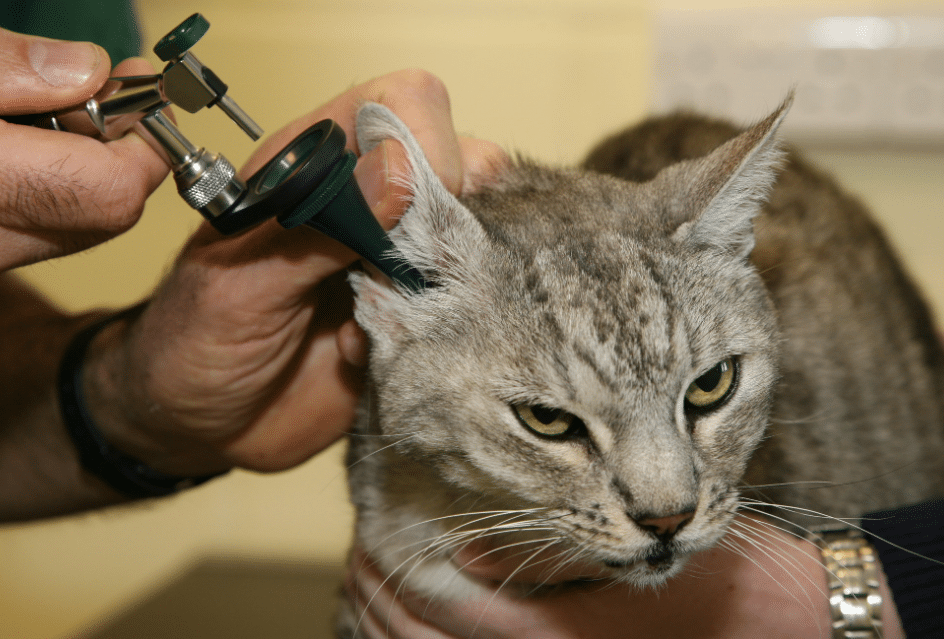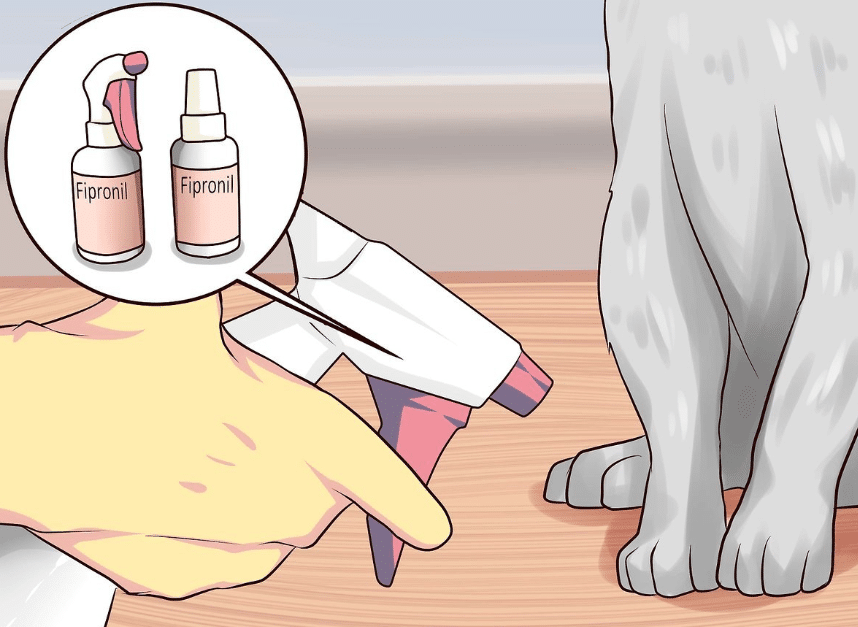How To Check For Ear Mites In Cats
How To Check For Ear Mites In Cats
Ear Mites In Cats: Ear mites are a fairly common parasite in both cats and dogs. The mites are microscopic and infectious organisms that are like tiny white dots in appearance but can barely be seen with the naked eye. Detection under a microscope is normally required to confirm their presence.
Ear mites live on the skin of the ear canal and feed off ear wax and skin oils. An adult normally lives for approximately two months but can multiply quickly with eggs. They take just four days to hatch and a further three weeks to develop into an adult mite ready to breed.

Cats that are afflicted with ear mites will typically scratch at the ears excessively. They shake their heads, even pulling out their own hair and drawing blood as they scratch. Some cats will shake their heads so much that a hematoma of the ear will form (with blood pooling in the ear due to the breakage of a blood vessel). When cats scratch at their ears to the point that injury is done to the ear canals or eardrums.
This type of mange is common in young cats, although it may occur at any age. It is known for being highly contagious, frequently passing from parent to newborn, and between animals of different species (this mite does not affect humans). The mite also commonly spreads out to other parts of the body.
Ear Mites In Dogs
Dogs with ear mites will typically scratch at the ears excessively and shake their heads, even pulling out their own hair as they scratch. Some dogs will shake their heads so much that a hematoma of the ear flap will form. The inflammation resulting from scratching can also cause long-term damage to the ear canal. The ear mite is known for being highly contagious. It frequently passes from the mom to her litter, and between cats and dogs.
Read Also: Long Haired Werewolf Cat
An ear mite infection will cause your dog’s ears to itch, which often results in them shaking their head excessively, or scratching at their ears with their paws. Ear mites can also produce wax and irritation, so your pet’s ears may well look red and inflamed. Typically, ear mites will also cause a dry black ear discharge. There may also be an unusual odor.
But irritation in a dog’s ear is more often than not caused by allergies leading to infections other than ear mites, so it’s crucial that you get your dog to the vets for a proper diagnosis – especially since the parasites are so difficult to detect with the naked eye. Vets will normally confirm a diagnosis of ear mites using an otoscope to look inside the ear. Without visiting the vet, many owners incorrectly assume that their dog has ear mites when they are, in fact, suffering from a bacterial or yeast ear infection; this can lead to weeks of inappropriate treatment and the condition worsening.
How To Get Rid Of Ear Mites
You can use an ear cleaning solution (available at pet supply stores) or try almond or olive oil, but clear the latter with your vet first. Put several drops of the solution or oil into the ear canal and massage gently. Massaging will help bring debris up to the outer part of the ear where it can be wiped away with a cotton ball or tissue. Do not use cotton swabs, because one slip could puncture an eardrum. Repeat the cleaning procedure until the debris is gone.
Read Also: Dew Claw Trimming
However, the levels in-ear miticides designed for cats are perfectly safe.) Follow directions carefully, making sure to massage the drops in well and wipe away any excess. A single cleaning and treatment with ear drops won’t do the trick, because just one surviving female mite with eggs will begin the entire ordeal anew. You must clean out your cat’s ears every day and use the miticide exactly as directed (which may take a few weeks depending on the product).
Home Remedy For Dog Ear Mites
- Green tea is a natural antiseptic. It can be used to flush out all the ear mite debris—that crumbly brown/black stuff that clogs the puppy’s ear canal. Steep a tablespoon of green tea leaves in a cup of hot water for three or four minutes and then strain it. Let it cool to room temperature before using once a day for a month.
- Oil helps soothe sore ears and also can float debris out. Oil also can suffocate the mites. Holistic vets say it doesn’t really matter what kind of oil you use, although some recommend almond or olive oil. For the best benefit, crush a couple of garlic cloves in a cup of oil and let it marinate overnight. Garlic naturally kills bacteria that might develop secondary to the mite infection. Remember to remove the garlic before using the oil to treat your puppy’s ears. You’ll need to treat the ears with the oil/garlic solution daily for at least a month.

Home Remedy For Dog Ear Mites
How Can I Treat My Cats Ear Mites?
The vet will rub mineral oil gently into the ears to soften the crusty debris. They will then flush the cat’s ears with warm water. After that, the vet will prescribe ear mite medication usually drops containing an insecticide like pyrethrin that you should put in the cat’s ears.
How Can You Tell If Your Cat Has Ear Mites?
Ear mites cause your pet to itch. So if you notice your cat scratching his ear more often, shaking his head, or angling his ears, that’s a good sign he has mites. You can also check your cat’s ears for black or brown waxy debris that resembles coffee grounds.
Can Humans Get Ear Mites From Cats?
Ear mites spread rapidly and can be transmitted from even brief physical contact with other animals. In pets, ear mites most commonly affect cats, ferrets, and to a lesser extent dogs. Humans can rarely be infected with ear mites. Infected animals have a large amount of crumbly dark brown material in their ears.
How Long Does It Take To Get Rid Of Ear Mites In Cats?
If using a single-use product such as Revolution one dose is often enough to get rid of an ear mite infection. But it will still take up to three or four weeks for the infection to completely clear up. Ear mites are most prevalent among outdoor cats.



